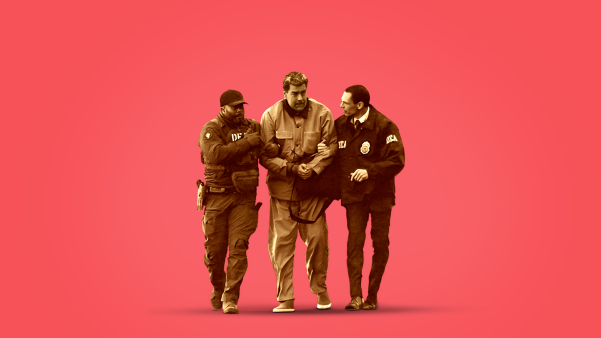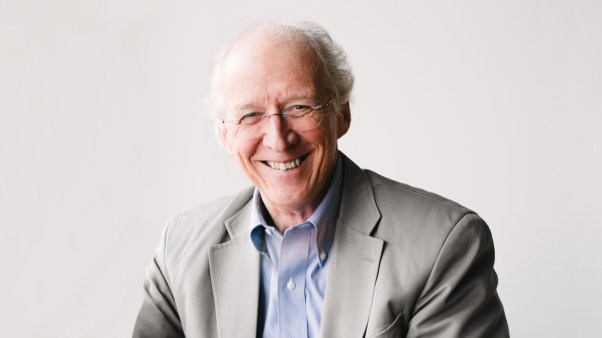Violence, we are told, followed so closely the origin of human evil as to be almost indistinguishable. For soon after Adam’s sin, violence appears—first in the skin taken from animals (Gen. 3:21), then in the murder of a brother (4:8), and finally over the whole of the earth (6:11). Violence follows humanity through the Flood and into the world beyond it, taking root in generational fights of the tribes of Isaac versus Ishmael and Jacob versus Esau. Nations that bear so much in common, divided by that very common history: This is the story of Scripture and of our own world.
It is into this violent world, not some easier one, that Christ gave his disciples the instruction to turn the other cheek, to pray for their persecutors, and to give to those that ask without expecting things to be returned (Matt. 5:38–48). These teachings have been contentious wisdom ever since, especially when we are confronted with horrors like the terrorist attacks by Hamas in Israel this month. Following Jesus here feels so impossible. Who could live that way in a world like this?
But that is what Jesus commanded, and it is this violent world for which he died and in which he was resurrected. It is into this violent world that the Holy Spirit was sent, and fruits of that Spirit are peace, humility, gentleness, and goodness (Gal. 5:22–23). Perhaps we think such gifts and teachings are unfit for a violent world, but Jesus thought otherwise.
Perhaps such an approach to great violence—to turn the other cheek and to seek the good of one’s enemy—seems nonsensical. And indeed, many in church history rendered exactly that verdict on Christian pacifism.
Perhaps, as one objection goes, these teachings describe a world beyond history. Perhaps these are commands we can heed only in the age to come. But this does not square with a Jesus who loved his own enemies, which includes all of us (Rom. 5:10).
Or perhaps, another objection goes, responding with limited force is justified when facing great evil, and Jesus meant his command only for interpersonal relations. But this, too, falls apart when compared with Christ’s own example. When Peter attempted to defend Jesus in Gethsemane, Jesus healed his enemy, sheathed Peter’s sword, and went away to die (John 18:10; Luke 22:51).
The prospect of a limited use of violence may seem eminently reasonable. But as it follows sin, violence will not be so easily contained and made rational. Violence is deceptive, even—or especially—when it is well-intended retaliation for rank evils like terrorism. It produces, by its nature, more wreckage than we expect.
What the teachings of Christ offer is a refusal to justify the non-sense of violence. It is a refusal to call violence “understandable” or “reasonable.” It is a refusal to minimize sin or follow its logic, whether by rationalizing terrorism or justifying violence in return.
Explaining how violence happens in a sinful world is no consolation to Rachel weeping for her children. For how do you explain hundreds dead at a music festival? How do you explain rockets hitting ordinary homes? How do you explain the bombs that answered those murders, hitting civilian apartment buildings and killing children in their beds? What kind of reason could stand up here?
To be clear, violence is not uniform: Terrorism is not the same as retribution, and killing civilians is not the same thing as killing terrorists. But we are in risky territory when we try to establish grades of respectability within violence, as if some of it might approximate how God created us to live. The moral calculus of violence must give way to a harder and more beautiful teaching: that all people are created in God’s own image, and the loss of any person is a victory of death, the last enemy Christ came to destroy (1 Cor. 15:26).
Christian pacifism is not about trying to make sense of the world’s violence, then, but about bearing witness to the God who stands with the victims of that violence and calls his disciples to do the same. It is less about promising to “fix” violence and more about becoming the kind of people who treat violence as God did on the cross: an evil to be overcome with love and mercy (Rom. 12:21).
In the Crucifixion, God does not respond to human violence with more bloodshed. He offers the ones who killed him a place at the table (Acts 2:36–38). If violence is a symptom of a world sick with sin, it cannot also be sin’s cure.
Does that mean a Christian pacifist is passive in the face of great violence? Hardly. We could point to pacifists serving as medics in combat zones, as translators and negotiators, as chaplains, and as relief workers. We could even point to pacifists who have lived in the Middle East as peacemakers and educators.
This approach—bearing witness to God’s own peace amid decades-long conflict—may seem far away from what is needed. But Christ, quite literally, offers just this form of peace.
Remember that we who are Gentiles were once “separate from Christ, excluded from citizenship in Israel and foreigners to the covenants of the promise, without hope and without God in the world. But now in Christ Jesus you who once were far away have been brought near by the blood of Christ,” as Paul wrote to the Ephesians. God himself has suffered violence to make “one new humanity out of the two, thus making peace, and in one body” reconciling us to God and one another (Eph. 2:11–22). If we want to call this frail and unrealistic, we must say the same of Christ.
So let us pray for the church in Nazareth, Bethlehem, Jerusalem, and Gaza to join hands in proclaiming that the Christ who has been raised from the dead will bring not only a cessation of violence but also the administration of justice—and in that justice, true peace. Let us pray that those who are in the midst of this violence will continue to proclaim that Christ has come to unite Jews and Gentiles into one body. And let us pray that we would all name violence for what it is: sin.
Myles Werntz is the coauthor of A Field Guide to Christian Nonviolence. He writes at Christian Ethics in the Wild and teaches at Abilene Christian University.













